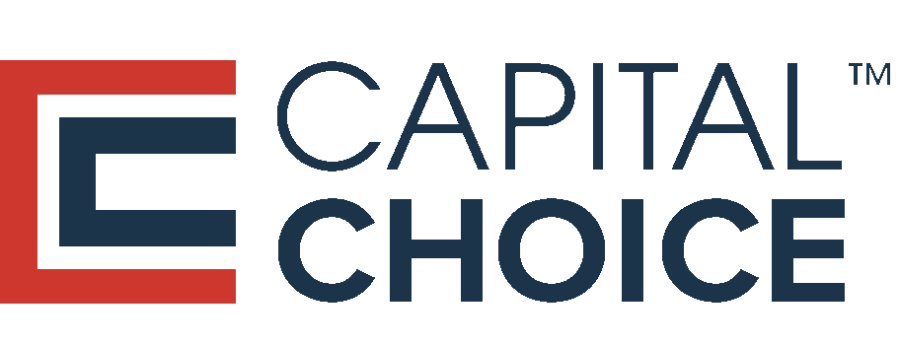I. Introduction
Ah, retirement. We all dream about it, don’t we? The days of sipping margaritas on a sunny beach or spending quality time with the grandkids. But let’s face it, getting to that dream can be a bit of a nightmare if you’re not prepared.
You see, I’ve been in the financial planning game for a while now, and I’ve seen my fair share of retirement blunders. People who thought they were ready to kick back and enjoy their golden years, only to be blindsided by unexpected costs or emergencies. It’s heartbreaking, really.
But you know what? It doesn’t have to be this way.
With a bit of foresight and some smart financial planning, you can avoid these retirement nightmares. And one of the most crucial steps in this process is setting up an emergency fund. Yes, you heard me right—an emergency fund. It may sound simple, but trust me, it’s a game-changer. Stick around, and I’ll explain why.
II. The Importance of an Emergency Fund
So, what’s this emergency fund I’m talking about? Essentially, it’s a stash of money set aside to cover any unexpected expenses or financial emergencies that might come your way. Think sudden medical bills, car repairs, or even an unexpected job loss.
I know, I know—no one likes to think about these things, especially when retirement is just around the corner. But let me tell you a little story. A good friend of mine, let’s call him Bob, was all set for retirement. He had his pension sorted, his 401(k) was looking healthy, and he was ready to enjoy his hard-earned rest. Then, out of the blue, his roof started leaking. Not just a small drip, but a full-blown, buckets-underneath-the-ceiling type of leak.
Bob had no choice but to get it fixed ASAP, which ended up costing him a small fortune. Without an emergency fund, he had to dip into his retirement savings, which threw off his entire retirement plan. It was a tough lesson, but one that highlights the importance of having an emergency fund.
You see, life has a funny way of throwing curveballs at us when we least expect it. And when you’re living on a fixed income in retirement, these curveballs can be even harder to handle. That’s where an emergency fund comes in. It gives you a financial safety net, so you’re not left scrambling when life decides to surprise you.
And trust me, having that peace of mind is worth its weight in gold. So, let’s dive a bit deeper and talk about how much you should save in your emergency fund.
III. How Much Should You Save in Your Emergency Fund
Alright, let’s get down to the nitty-gritty. How much should you actually save in your emergency fund? Now, if you’re expecting a one-size-fits-all answer, I’m afraid I’m going to disappoint you. The truth is, it varies from person to person.
However, a good rule of thumb that many financial experts—including yours truly—recommend is to aim for three to six months’ worth of living expenses. This should give you enough of a buffer to handle most unexpected costs without breaking a sweat.
Let me give you an example. Let’s say your monthly expenses come up to $3000. That includes everything from your mortgage or rent, utilities, groceries, and any other regular bills you have. In this case, you’d want to have between $9,000 and $18,000 tucked away in your emergency fund.
But remember, this is just a guideline. If you have a high-risk job or have health issues, you might want to aim for a larger emergency fund. On the other hand, if you have a strong support network or other sources of income, you might be okay with a smaller fund.
When I was building my own emergency fund, I started by setting a goal of three months’ worth of expenses. Once I hit that target, I felt more secure and decided to keep going until I reached six months. It took some time and discipline, but knowing I had that safety net gave me peace of mind.
So take some time to look at your personal circumstances and decide what makes sense for you. And remember, even a small emergency fund is better than none at all. Every little bit helps!
IV. Best Places to Keep Your Emergency Fund
Alright, you’ve decided how much you want to save in your emergency fund. Now, where should you keep it? The answer might seem obvious: “In the bank, duh!” But hold on a minute—there’s a bit more to it than that.
Your emergency fund needs to be easily accessible—you never know when you might need it, after all. But at the same time, you also want your money to grow if possible. It’s a bit of a balancing act, but don’t worry—I’ve got some suggestions that can help.
High-Yield Savings Account: These are just like your regular savings account but with a higher interest rate. This means your money will grow faster over time. Plus, they’re typically insured by the FDIC, so your money’s safe even if the bank goes under.
Money Market Account: These are similar to high-yield savings accounts but usually come with a few more restrictions, like a higher minimum balance. However, they often offer slightly higher interest rates, which can be a nice bonus.
Short-Term CDs (Certificate of Deposit): These are timed deposits where you agree to leave your money in the bank for a set period (like six months or a year), and in return, you get a guaranteed interest rate. Just make sure the term is short, so you can access your money if you need it.
When I started my own emergency fund, I used a combination of these options. I put the bulk of my savings in a high-yield savings account for easy access and then put a smaller portion into a short-term CD for a little extra growth.
Remember, the goal here isn’t to get rich off your emergency fund—it’s to provide a financial safety net. So, the priority should always be easy access and safety rather than high returns. Choose the option that best fits your needs and comfort level.
And there you have it! With your emergency fund in place, you can rest easy knowing you’re prepared for whatever life throws at you in retirement. So, here’s to a stress-free, margarita-sipping future. Cheers!
V. Common Mistakes to Avoid
Now that we’ve discussed the importance of an emergency fund, how much you should save, and where to keep it, let’s address some common mistakes people often make when it comes to their emergency funds. It’s better to learn from others’ mistakes, right? So, let’s dive in.
Not Having An Emergency Fund At All: This is the biggest mistake of all. Even if you can only save a little each month, every bit helps and it’s important to start somewhere.
Confusing Emergency Fund with Savings: Remember, an emergency fund is not a savings account for your dream vacation or that shiny new gadget. Its sole purpose is to cover unexpected expenses, so resist the temptation to dip into it for non-emergencies.
Keeping The Fund Too Accessible: While it’s important for your emergency fund to be accessible, keeping it too handy (like in your regular checking account) might tempt you to use it for everyday expenses.
Investing Your Emergency Fund: Remember, the primary goal of your emergency fund is not growth, but security. It’s generally not a good idea to invest your emergency fund in stocks or other volatile investments. Stick to safer options like high-yield savings accounts or money market accounts.
Forgetting to Replenish The Fund: If you do have to use your emergency fund, make sure to replenish it as soon as you can. It’s easy to forget this step once the crisis has passed, but another one could be just around the corner.
Underestimating Your Monthly Expenses: When calculating how much you need in your emergency fund, be honest about your monthly expenses. Don’t just include your bills—remember to factor in groceries, transportation, healthcare, and other necessities.
By avoiding these common mistakes, you can ensure that your emergency fund will be there for you when you need it most. It’s like having a financial guardian angel—always there to catch you when life tries to knock you down. So, keep saving and stay financially secure!
VI. The Impact of an Emergency Fund on Your Retirement
The importance of an emergency fund extends well beyond providing a safety net for unexpected expenses. It can also have a profound impact on your retirement – and in more ways than you might think.
Preserving Your Retirement Savings: Having an emergency fund can prevent you from dipping into your retirement savings when unexpected costs arise. This is crucial because early withdrawals from retirement accounts can result in hefty penalties and taxes, not to mention the lost growth potential of the funds withdrawn.
Reducing Financial Stress: Knowing that you have a financial buffer can greatly reduce stress, which is particularly important during retirement. High-stress levels can lead to health problems, which can be costly and diminish your quality of life in retirement.
Allowing for Riskier Investments: If you have a solid emergency fund, you may feel more comfortable taking on slightly riskier (and potentially more profitable) investments with other parts of your portfolio. This could potentially lead to higher returns over time, boosting your overall retirement savings.
Providing Flexibility in Retirement Income Strategy: With an emergency fund, you have the flexibility to adjust your retirement income strategy based on market conditions. For instance, during a market downturn, you might choose to live off your emergency fund temporarily to avoid selling your investments at a low value.
Covering Unexpected Retirement Expenses: Even in retirement, unexpected expenses can arise. These could range from healthcare costs not covered by insurance to major home repairs. An emergency fund ensures you have resources to cover these expenses without disrupting your planned retirement lifestyle.
In conclusion, an emergency fund is not just an essential tool for financial stability throughout your working years, but it also plays a vital role in ensuring a secure and stress-free retirement. So, if you haven’t started building your emergency fund yet, there’s no better time than now!
VII. Conclusion
Building and maintaining an emergency fund is one of the most critical steps in creating a robust financial plan. It provides a safety net that protects you from unexpected expenses, reduces stress, and can even positively impact your retirement.
Remember, it’s not about having a huge amount stashed away overnight. Start small, be consistent, and gradually build up to a level that gives you comfort and security. Opt for places that offer accessibility and safety for your emergency fund, like high-yield savings accounts, money market accounts, or short-term CDs.
Avoid common pitfalls such as confusing your emergency fund with regular savings, keeping it too accessible, or forgetting to replenish it after use. Understand that this fund has a significant role in preserving your retirement savings and providing flexibility in your retirement income strategy.
In essence, an emergency fund is more than just a financial buffer—it’s peace of mind. It’s knowing that you have the resilience to weather life’s storms without derailing your long-term financial goals. So, take that first step today, because every financial journey begins with a single step towards preparation and security.
Here’s to your financial health and a worry-free future!



